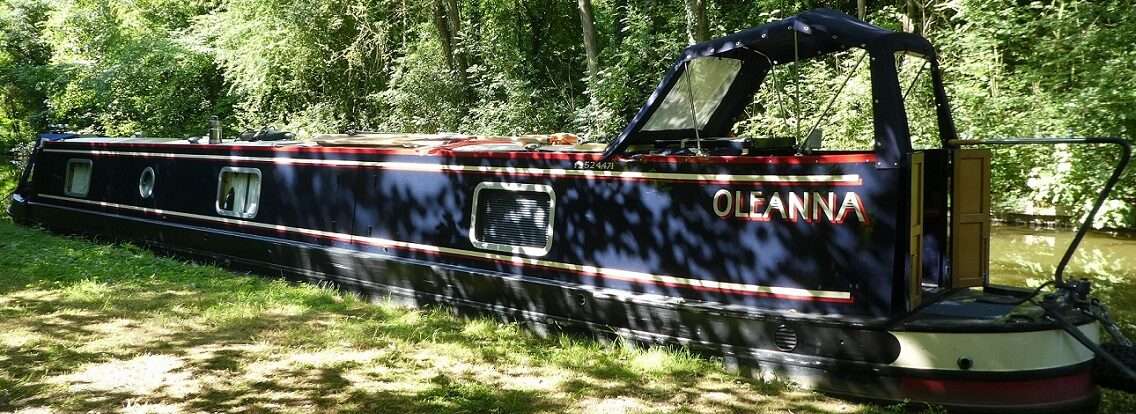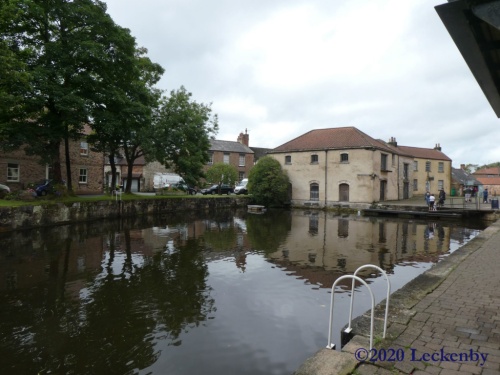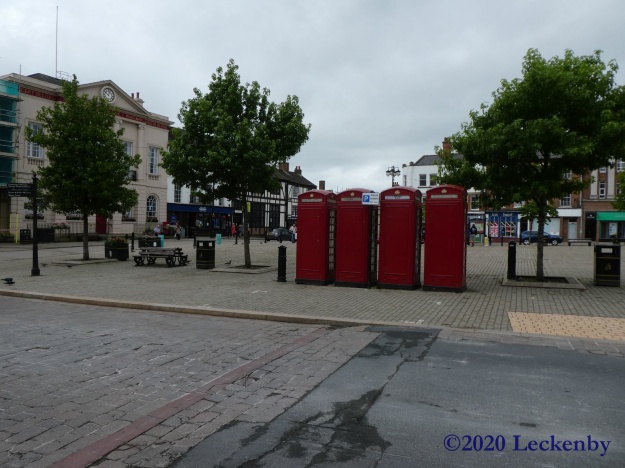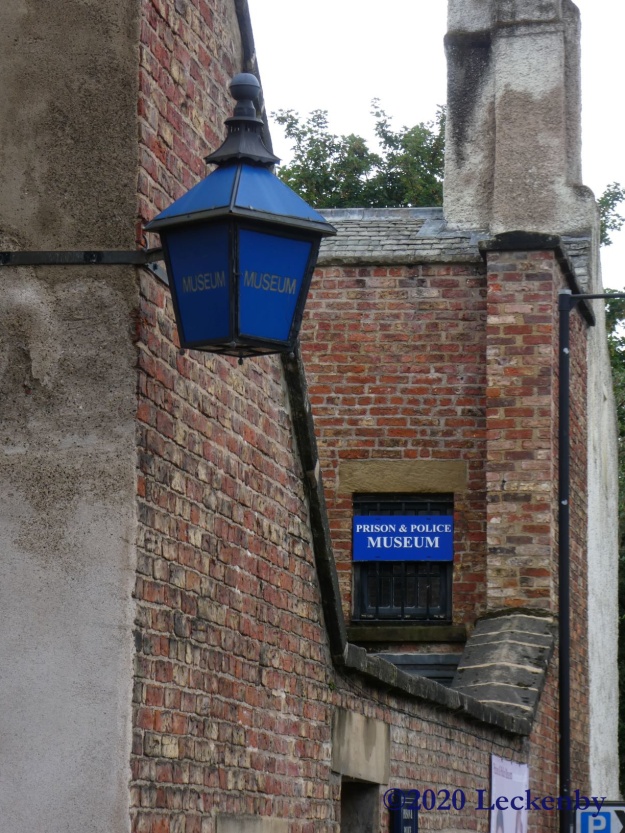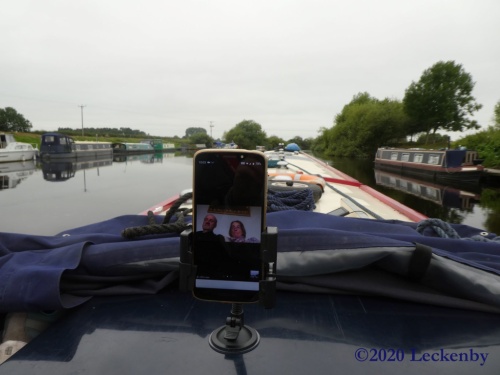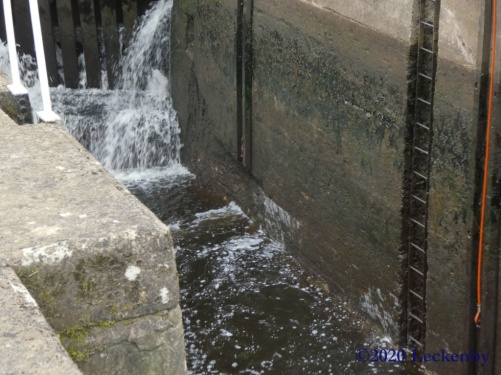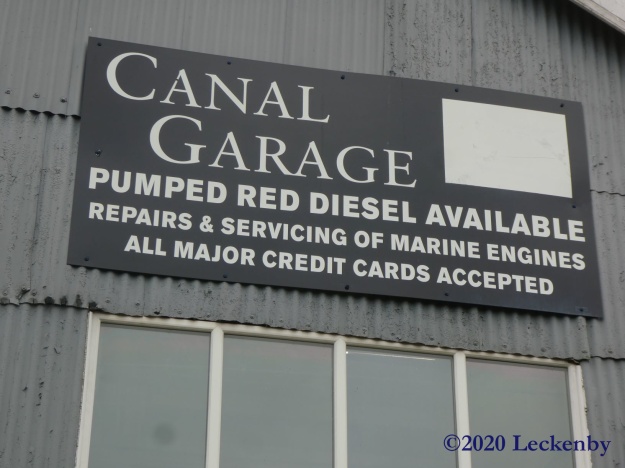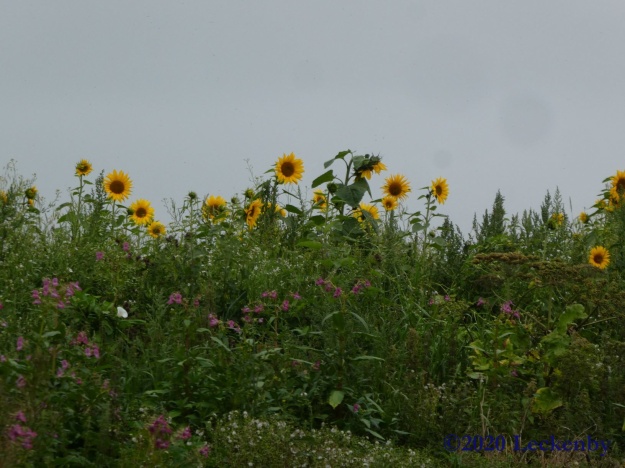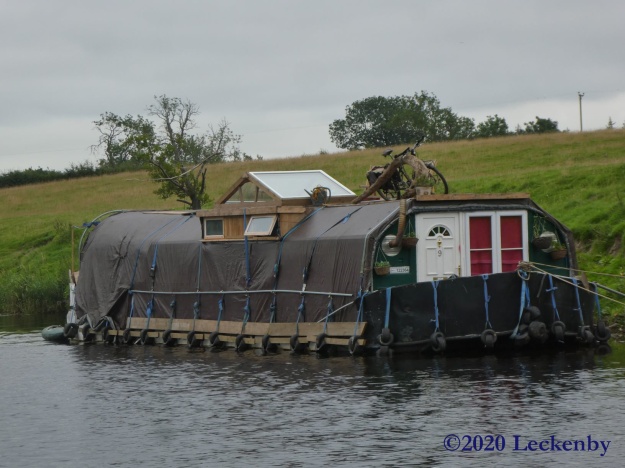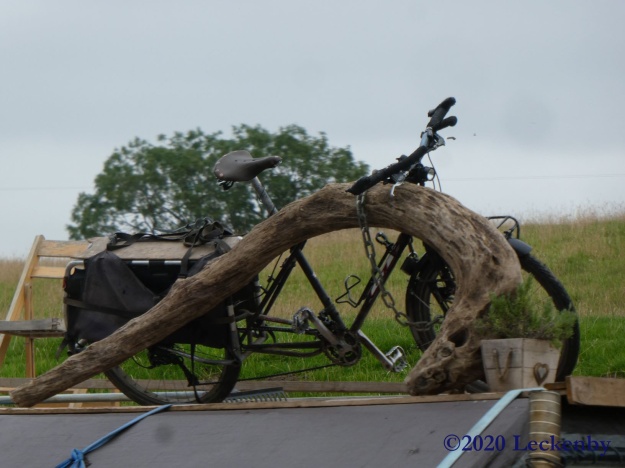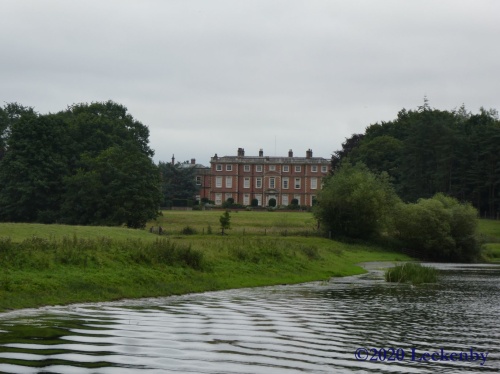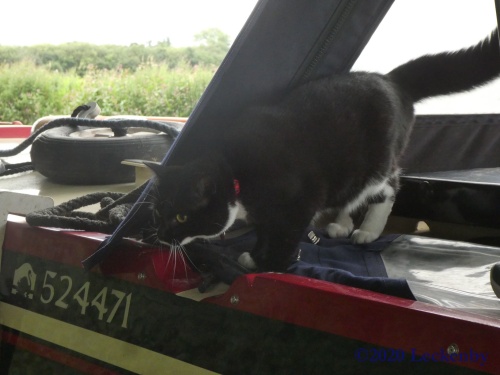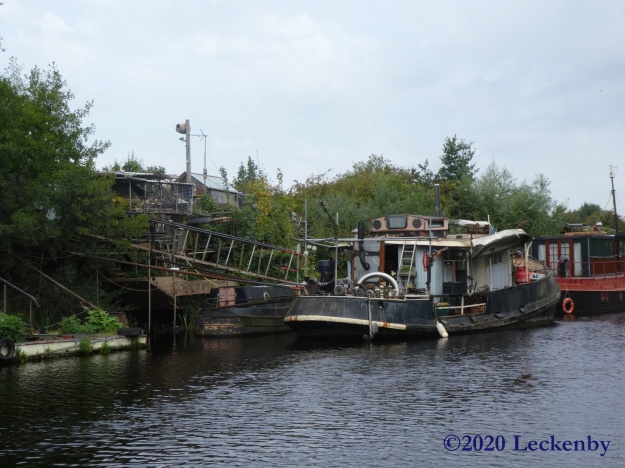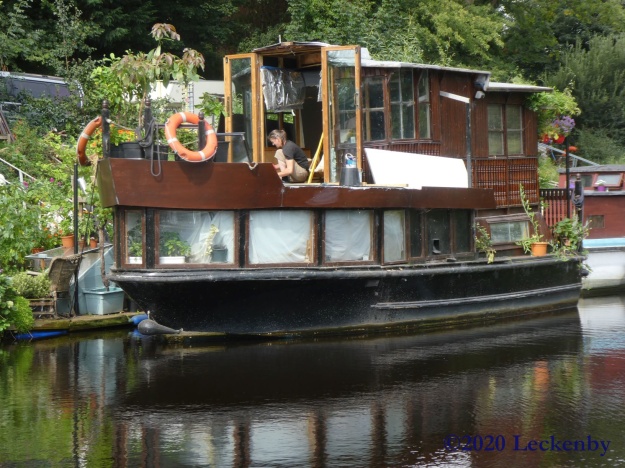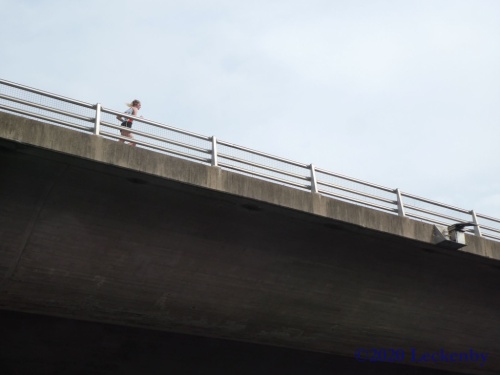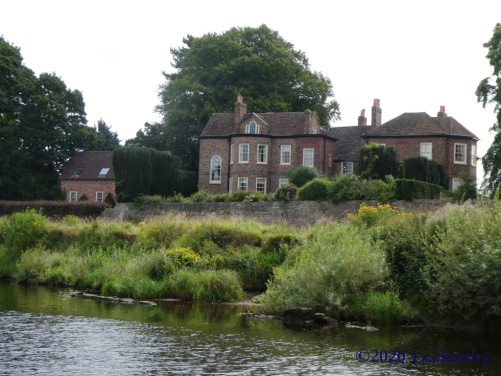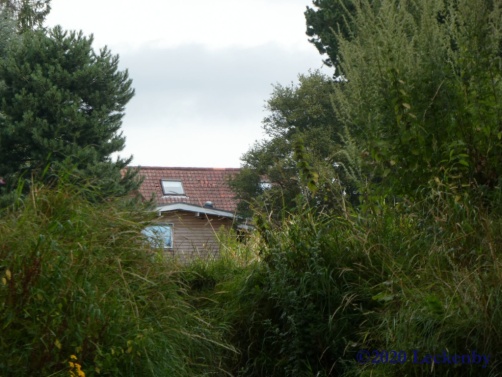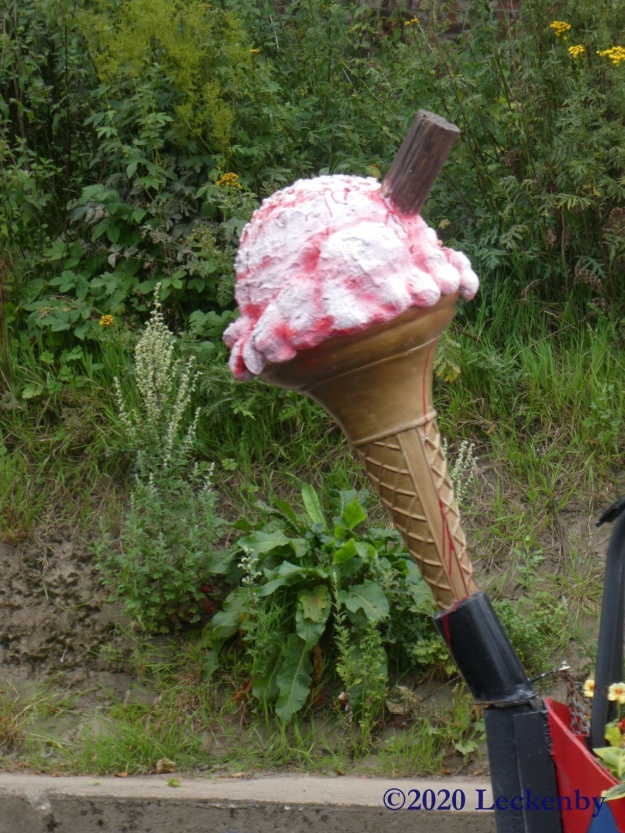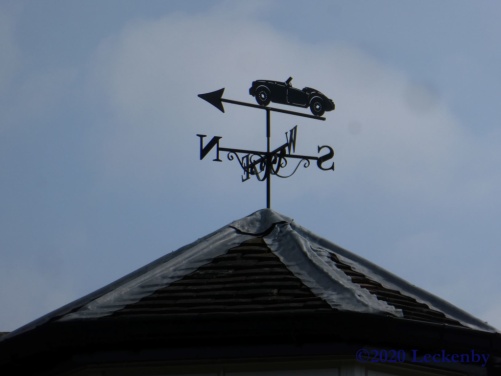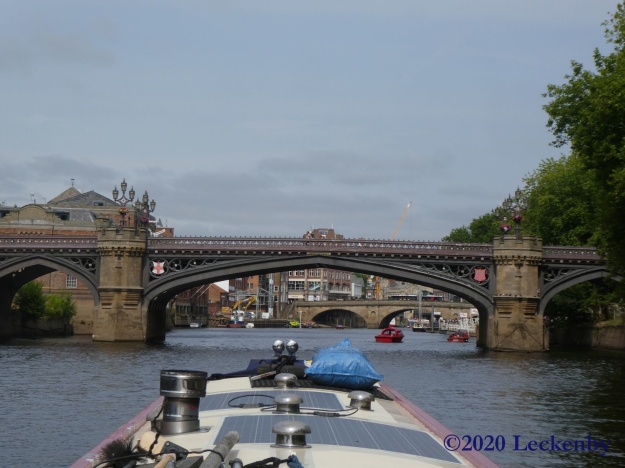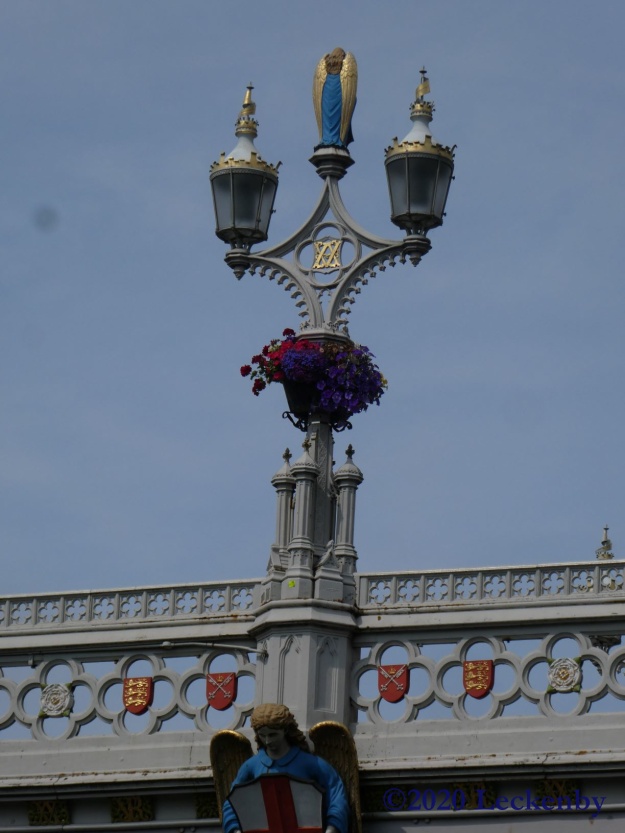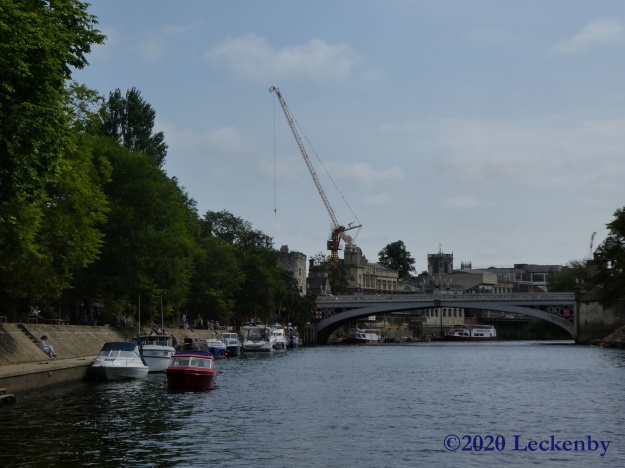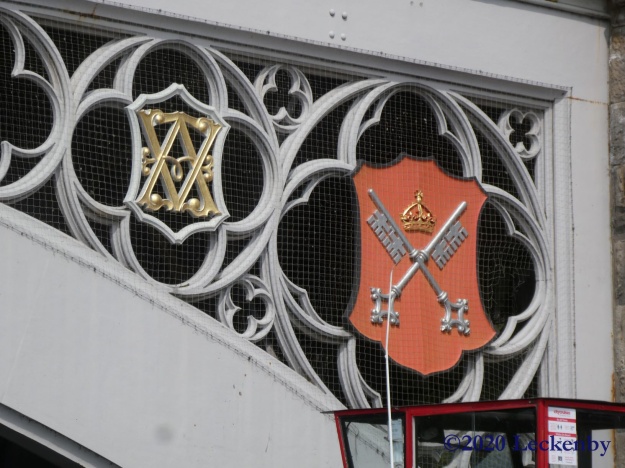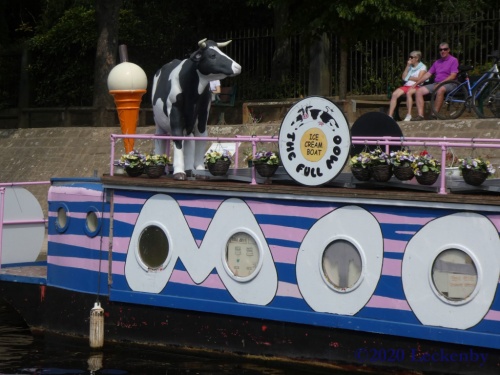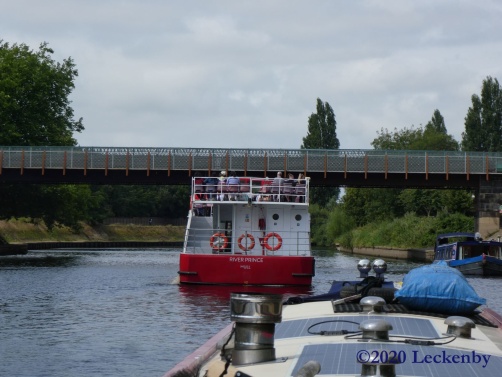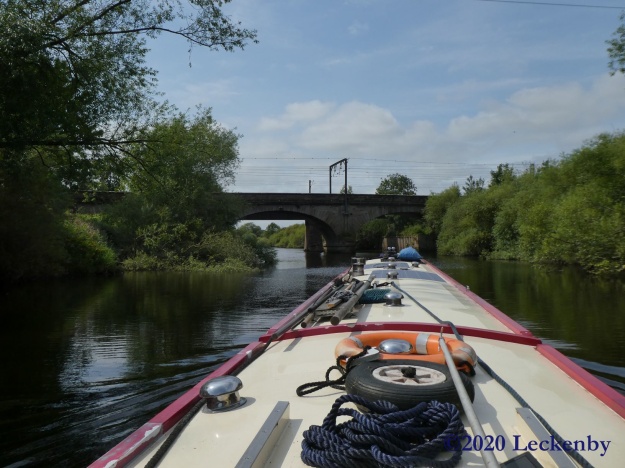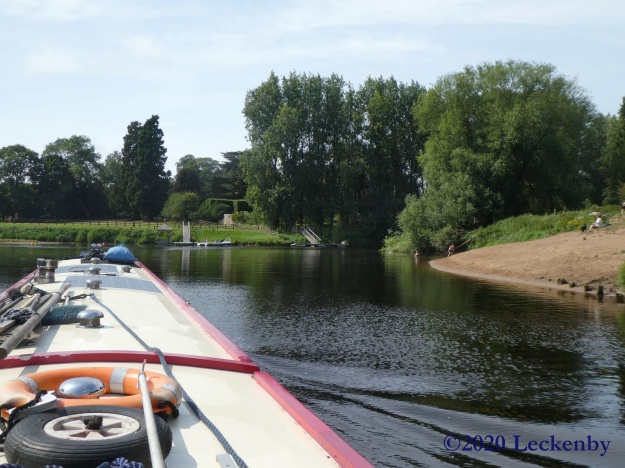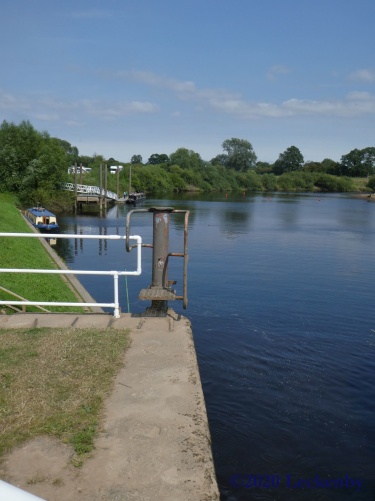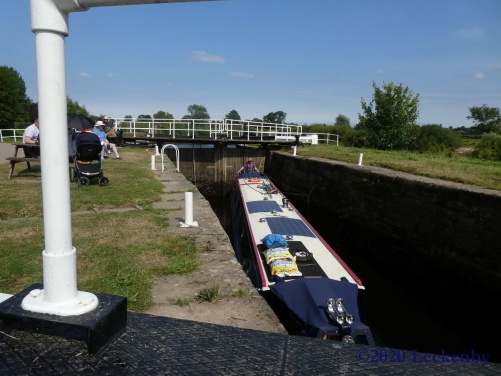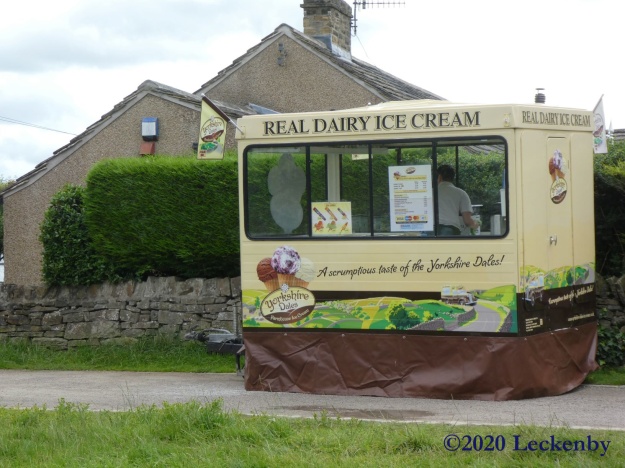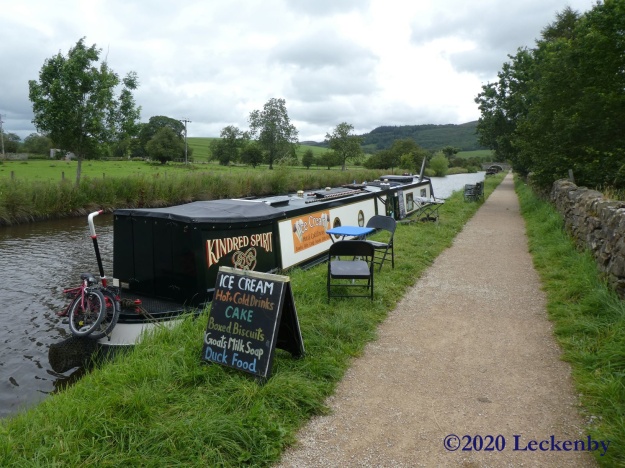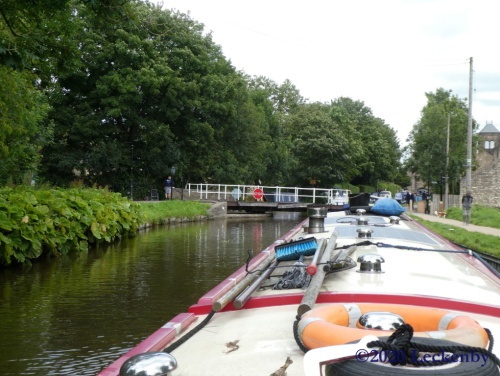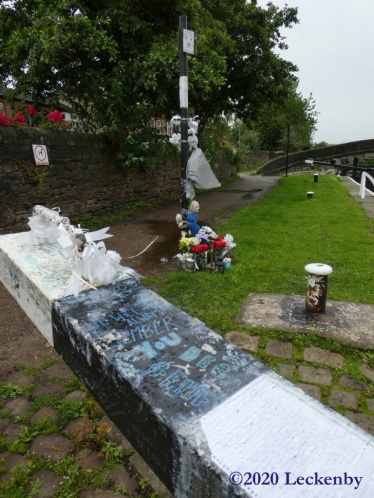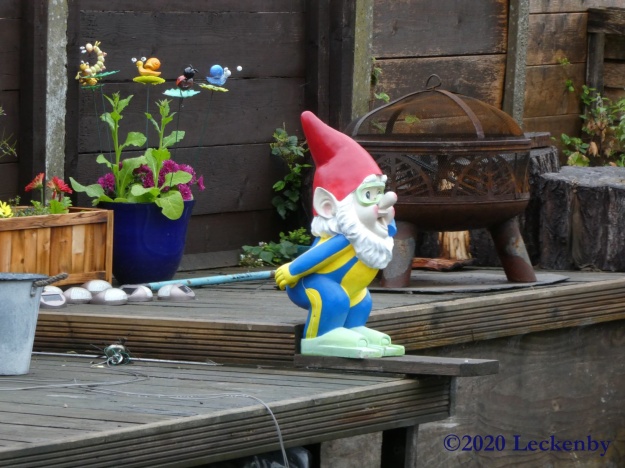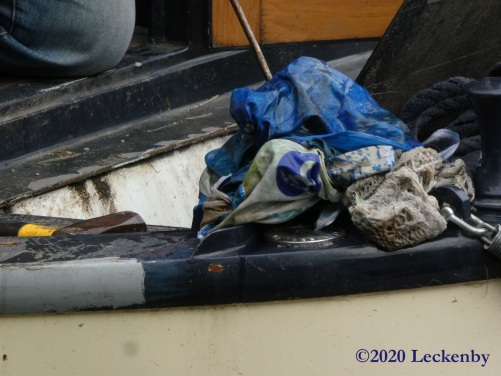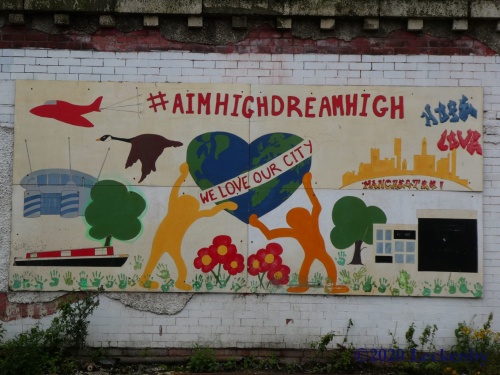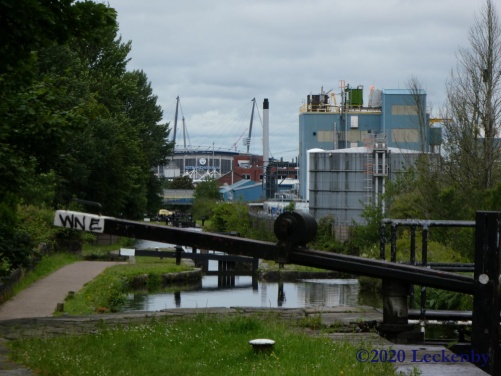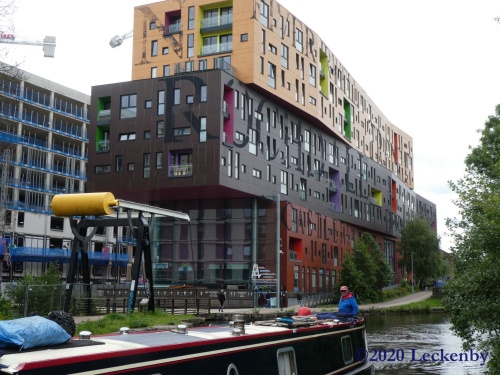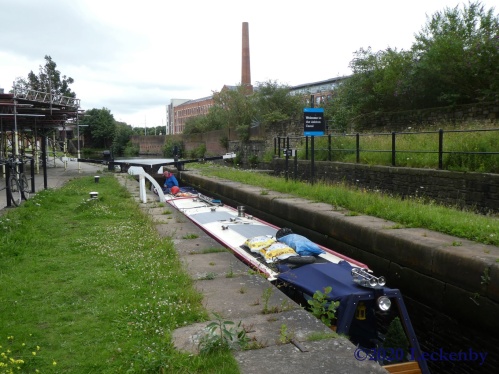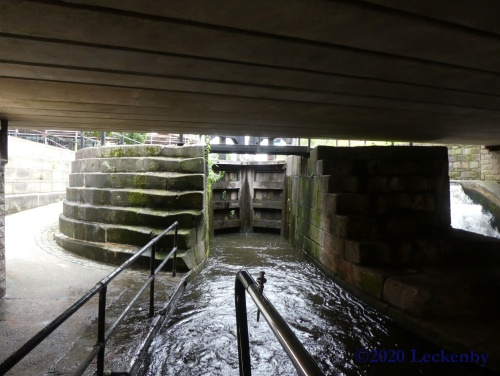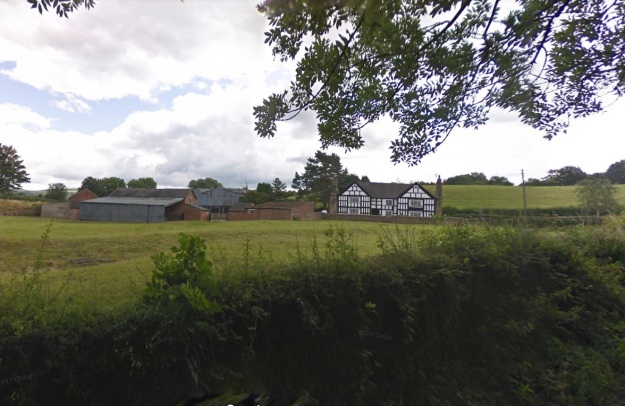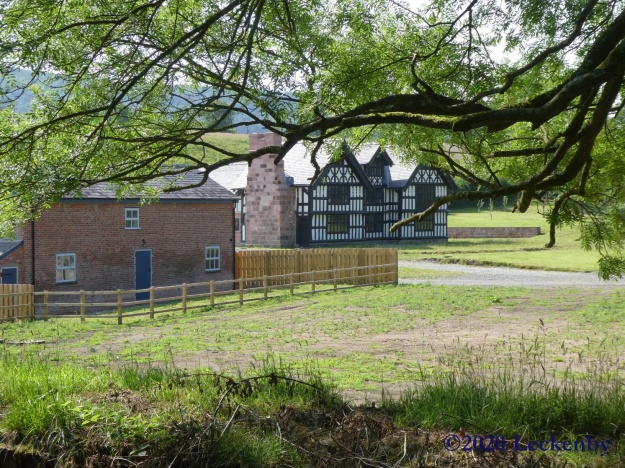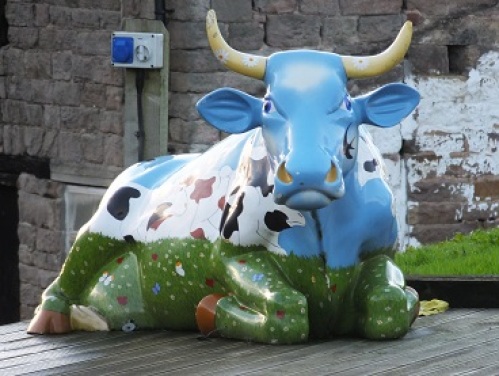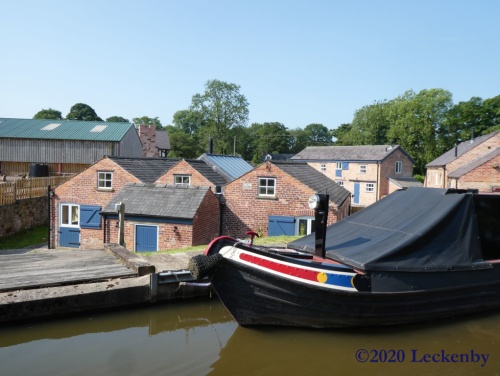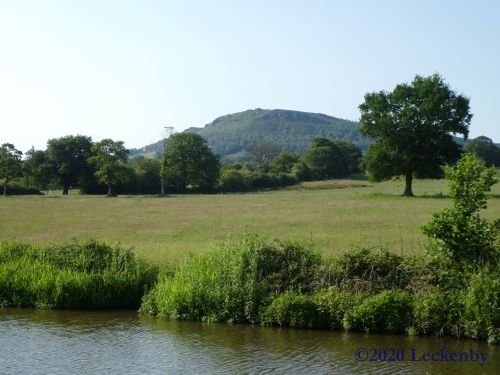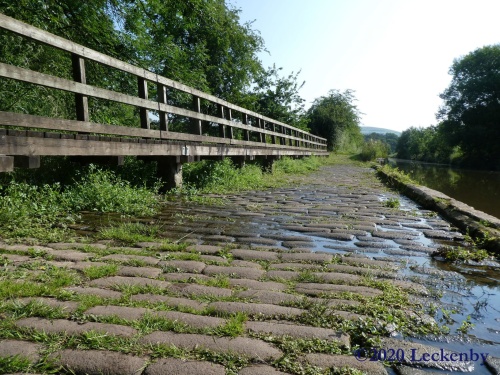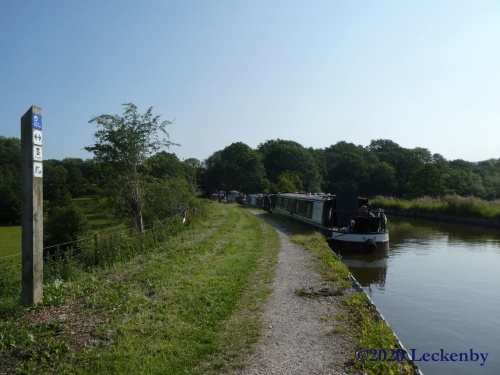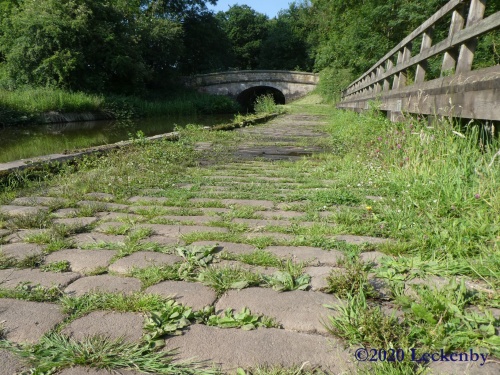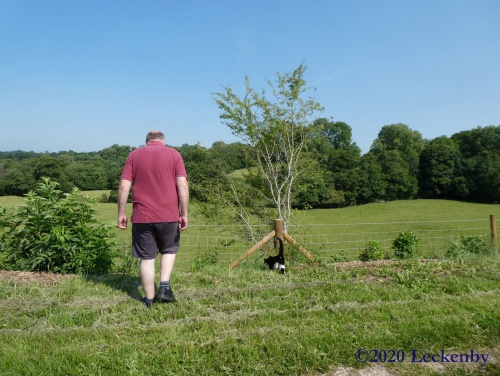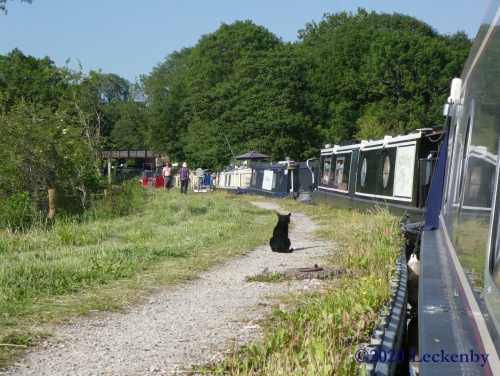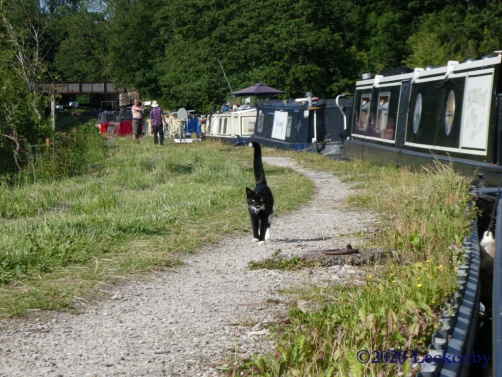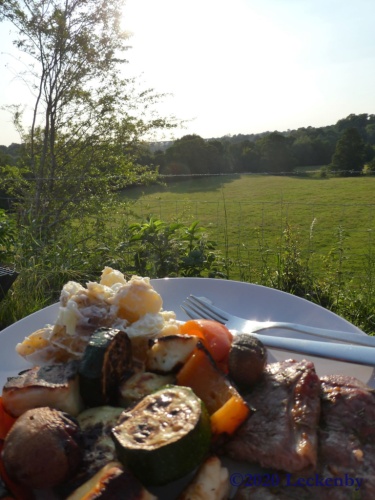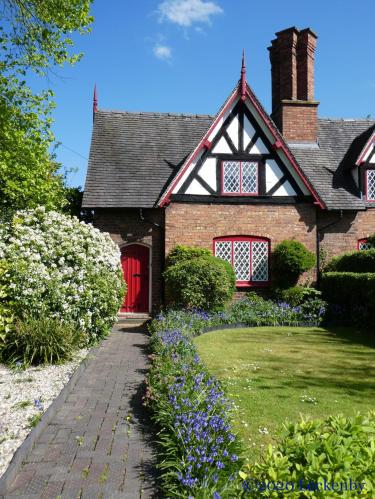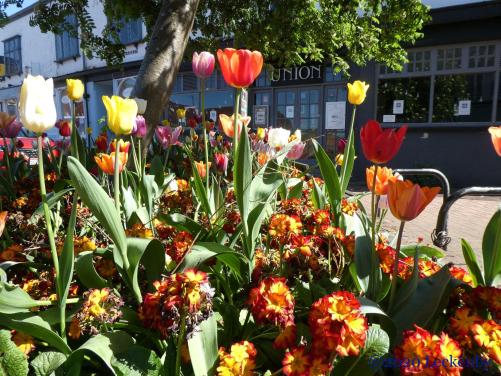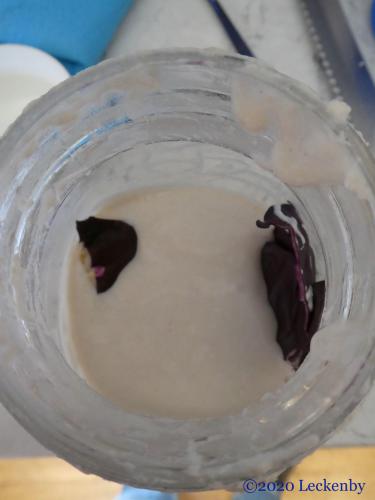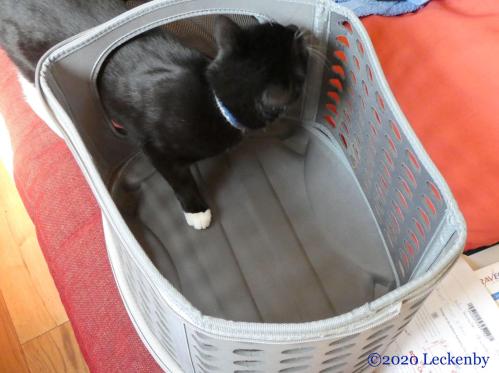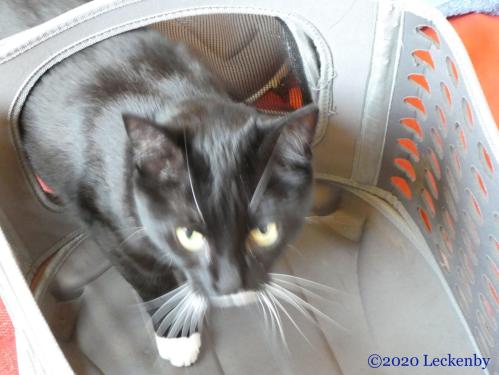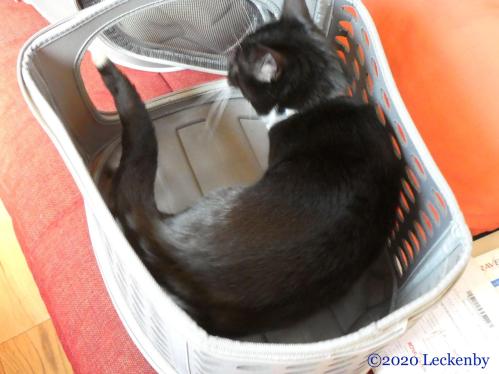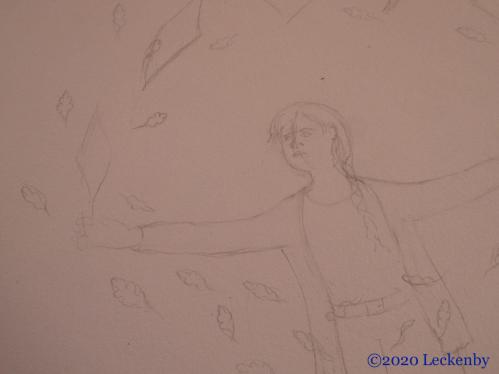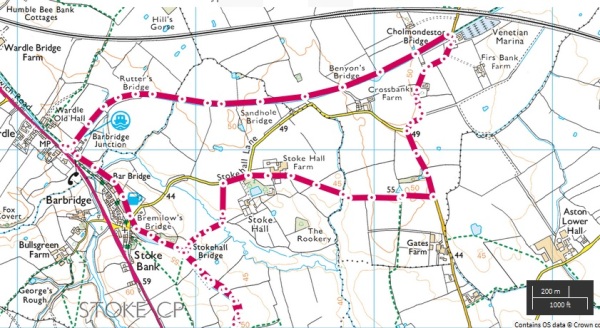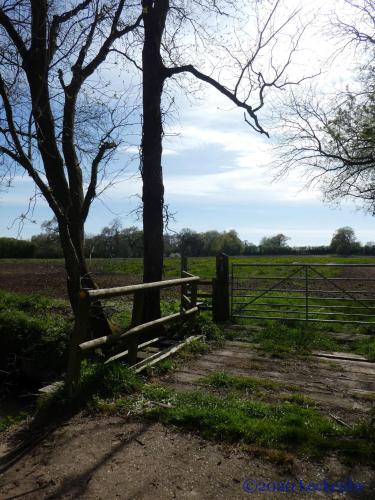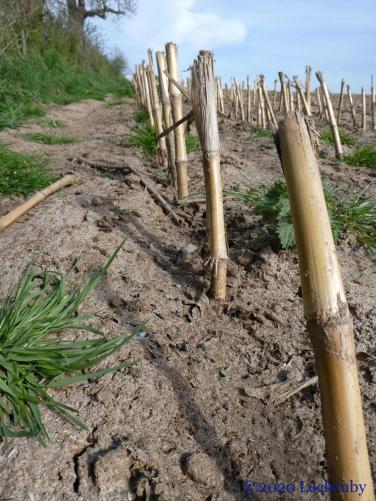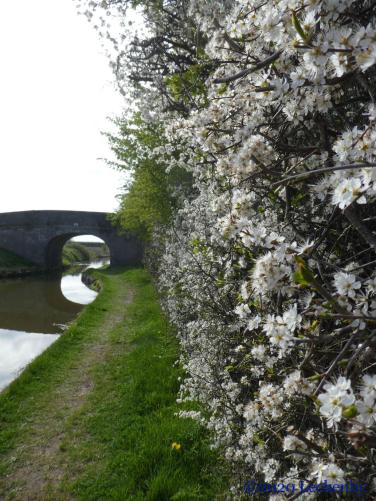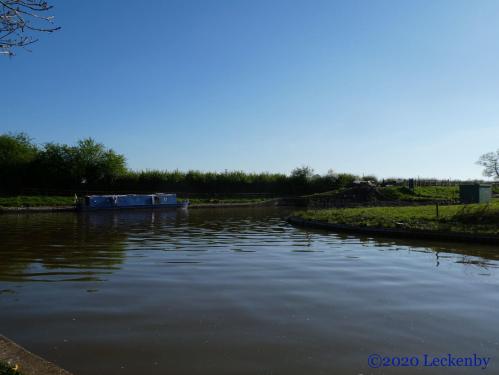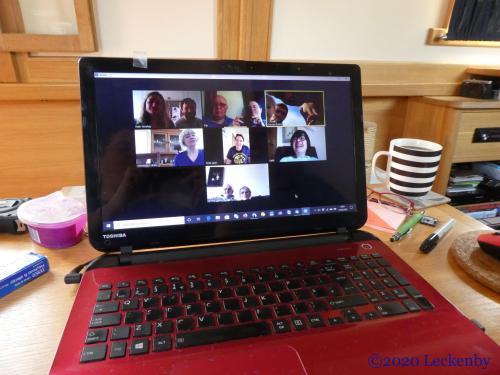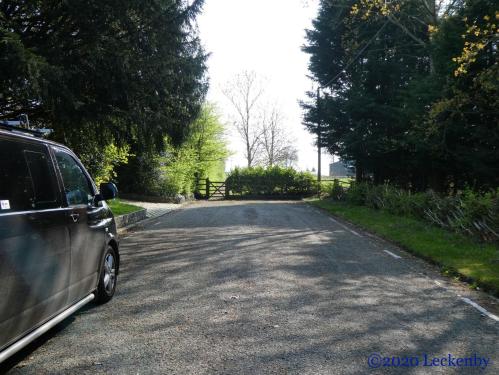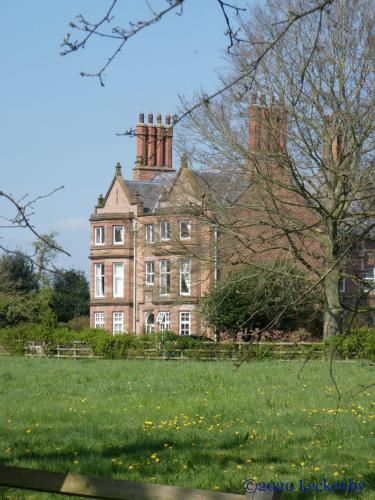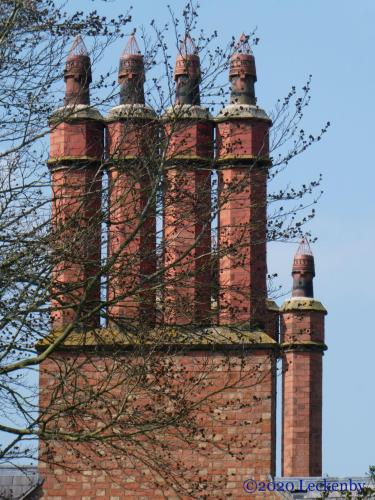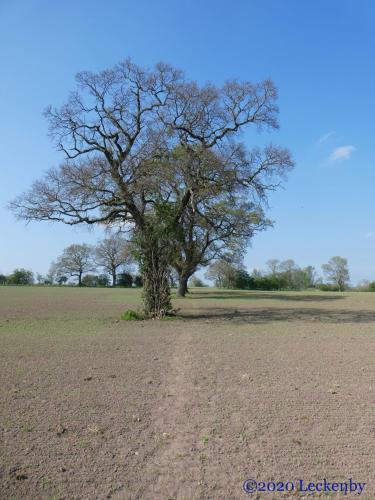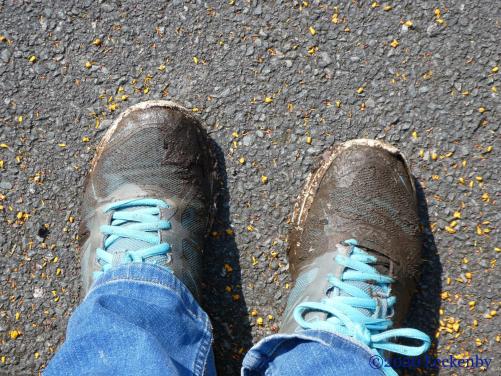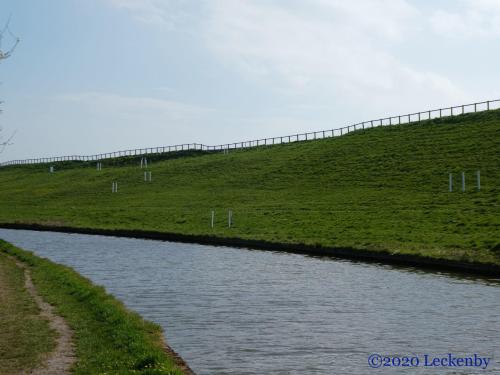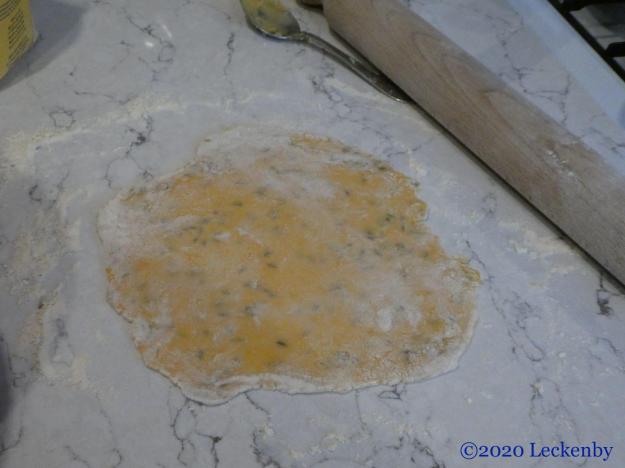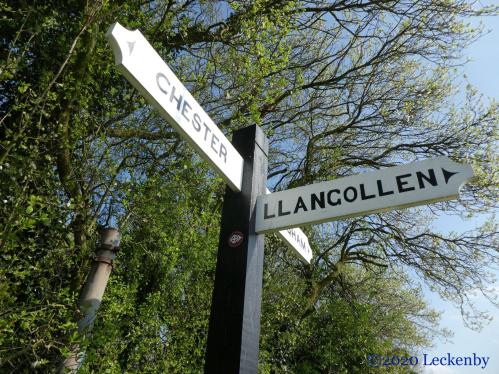Museum Gardens
The voice of Houdini woke us this morning, Mick was to be on the 8:57 train to Scarborough to visit the dentist, so there was no lounging around in bed with a cuppa for him. A peek out of the window revealed that the level had risen again overnight, only what looked like a couple of inches, we’d still have at least another foot before we’d be getting wet feet on the moorings here. Gaugemap was checked along all the tributaries up stream before Mick committed to his journey eastwards. I’d not be too keen on moving Oleanna on my own should the level rise!

Today was to be windy, very windy. Tilly and I got on with the normal morning routine, keeping an eye on the other side of the river for the level and being buffeted about somewhat.
On the other side of Lendal Bridge is where all the trip boats get moored overnight, at the tail end all the little red hire boats are huddled up together. I was quite surprised when these had been moved mid morning, then at intervals of 10 to 15 minutes one would pass by. The strong winds which we’d not consider moving in didn’t seem to be a problem for them. Then the trip boats started to do their rounds, adding to the swell on the river.

It was a bumpy morning, a little unsettling so I needed to keep myself occupied. As I was expecting visitors I decided to give Oleanna a tidy and sweep through, not that anyone would be coming onboard, but it did the job of keeping my eyes away from checking the level constantly. A batch of biscuits were popped in the oven and had just cooled off when there were voices outside.
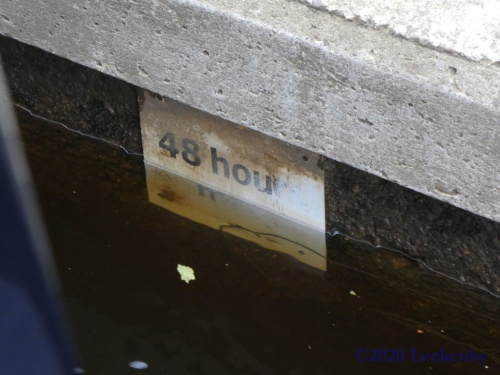
Jaye and Duncan had come for a cuppa and a catch up, other than briefly last night it’s just over a year since we last saw them. If the weather had been more conducive I’d have made refreshments for us to enjoy on the river bank watching the world go by. This was still a vague hope, but was soon replaced with heading into town to find a cafe.


Duncan suggested Spring Espresso on Lendal, a small cafe. They couldn’t move two tables together for us, but we could use two tables which was just fine helping us all to keep our distance.

Eggs Benedict with spinach and mushrooms, the poached eggs cooked perfectly, yummy!
There was lots to catch up on, theatre, friends, tenants, our travels etc. which meant trying to eat got in the way a touch.
As we were nearly finished another Scarborough face appeared at the door. Georgie used to work at the SJT and is now a Producer for York Mediale an International Media Arts Festival that is held every year. She spotted Jaye and Duncan and then did a second take when she saw me. It was lovely to see her even if it was very brief as she was meeting with an artist.

A lovely lunchtime meeting and catch up with good friends. Back at Oleanna the level still looked pretty much the same. More checks on Gaugemap and the Governments river and sea levels site. Looking at the Viking Recorder levels there is a forecast level, this was due to remain steady for a while but later today to rise by half a meter. Because of this when Mick had seen his dentist he cycled to the house, picked up post and cancelled an appointment with a plumber so that he could be back sooner, just in case we needed to move.
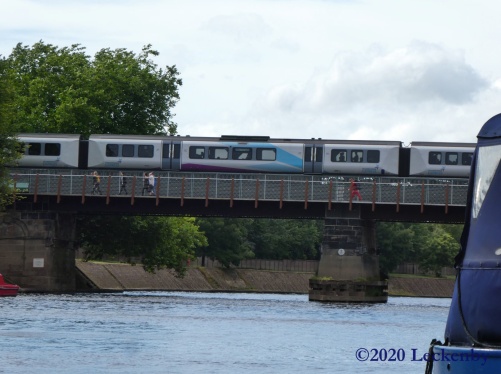
At 14:24 I got a text message. Mick was on the ‘Yay!’ train. When he worked in York, pre-boating days, he commuted from Scarborough by train, there was a ‘Yay’ train and a late train. Today trains were two hours apart, they may have more carriages but his return journey was quite busy.

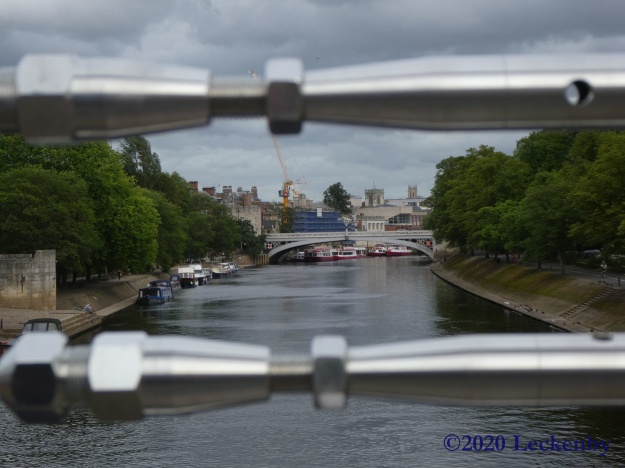
We had a walk around the block so that I could see the new footbridge. Built with social distancing in mind it is wonderfully wide. Built from steel and fashionable rusted metal it does the job well. Mick reckons the bridge would have saved him at least five minutes each way on his commute, so he’d have managed the ‘Yay’ train more often.

Some post had arrived at the house for our old tenant, so this needed returning. Handily Leeman Road sorting office still has a late collection even if it’s clock is wonky. As a child it was exciting to climb in the car with Dad and come to post a letter late at night, imagining there to be someone just behind the post box who would stamp it with a postmark, sort it and send it on it’s way to arrive before 8am somewhere.

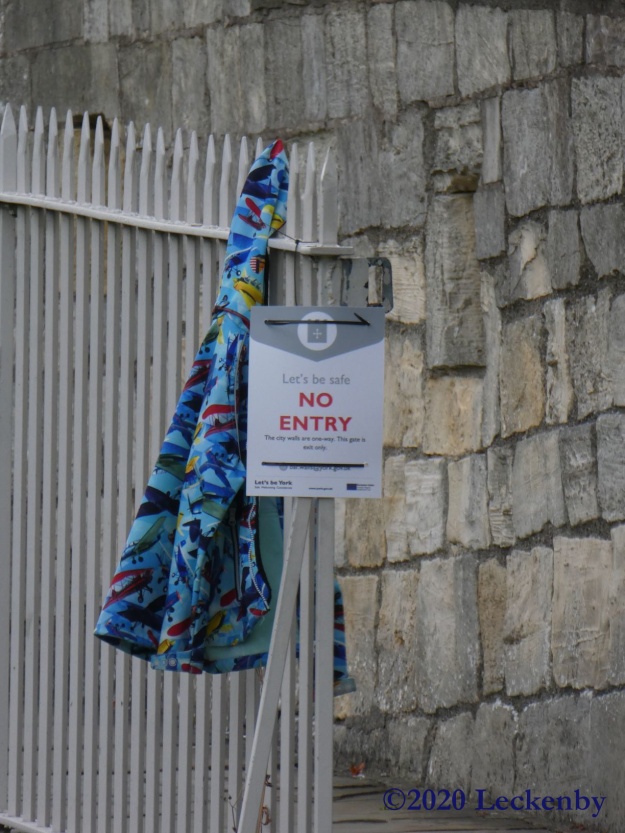
The bar walls are all one way, I pity the person who lost their coat during their circular perambulation, would they have to walk ALL the way back round to pick up their coat?
As the streets seemed that bit emptier we decided to go a touch further. A patch of unkempt riverbank behind Coney Street needed investigating. Could this be where York City Council could install some pontoons for boaters?


Coney Street used to be THE shopping street in York, now the number of empty shops is scary. A chap disappeared down a slope between WH Smith and Boots, this was where we needed to be. A steep narrow concrete ramp led down to the river, the walls on either side showing grooves from many deliveries.

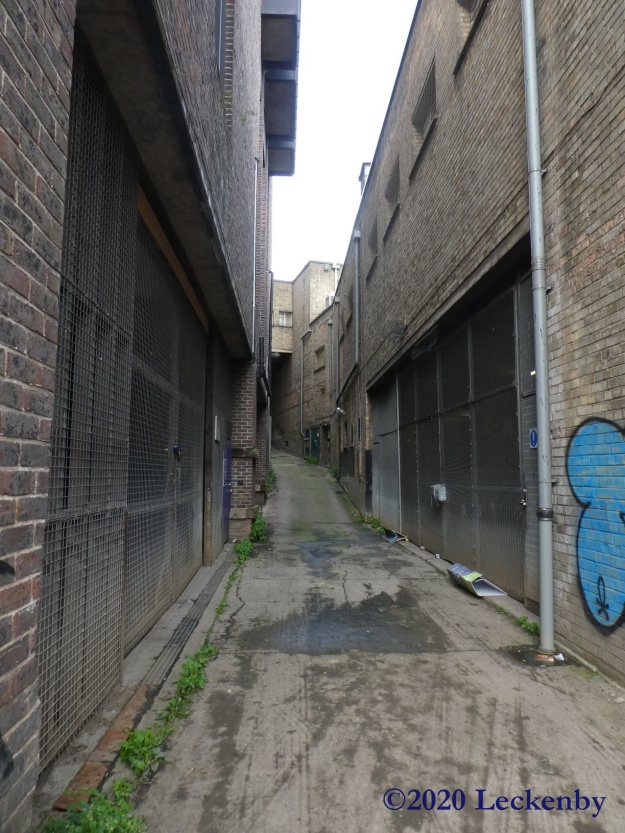
At the end mesh fencing stopped us from checking out a set of steps down into the river and caged delivery bays now host bicycle racks. The chap came out with his bike, ‘There’s nothing down here!’ Well actually he was wrong. Should anyone ever decide to provide flood safe moorings for visitors in York here would be an ideal spot. Unused river frontage, steps (that would need replacing) and access up to Coney Street along with a very old WH Smith logo.
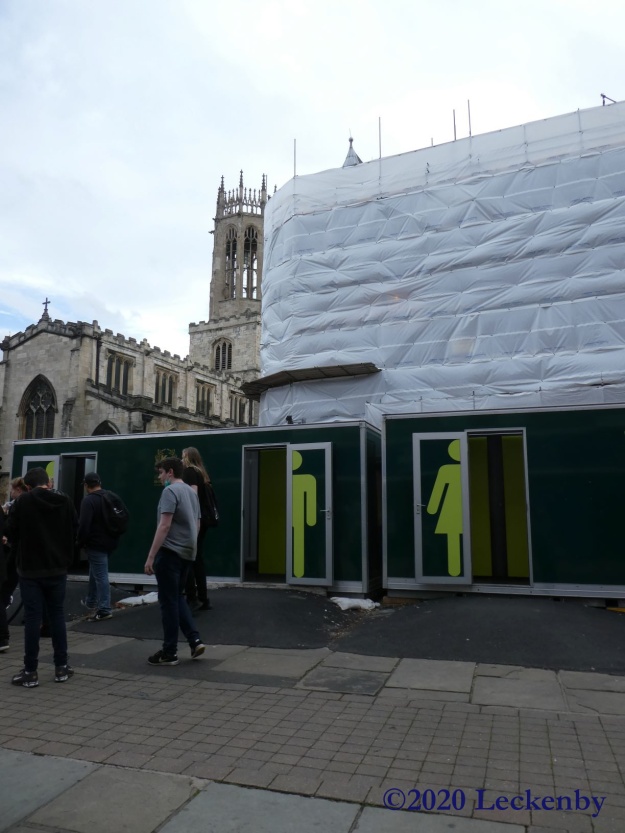

Waterstones has moved, the public toilets in Parliament Street have been demolished and replaced with portacabins, just as ugly as their predecessors. The pavement along this stretch was surprisingly uneven, up and down. I wonder if there are plans to try to level this out, maybe loose the trees that were planted in the 70’s 80’s, the fountain from then has gone.

A glance in at Betty’s tearoom is always a must. They looked busy but could have coped with two more. When we got back to Oleanna the level looked to have dropped just a touch more, ‘max’ on the mooring sign, was now just about above water. We’ll see what happens overnight.
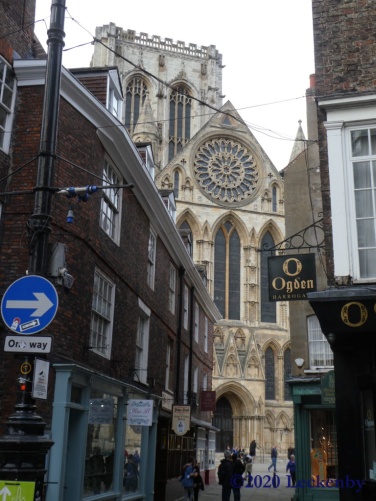
0 locks, 0 miles, 2 trains, 1 filling, 2 visitors, 3 more mentions, 2 photos, 1 rising river, 1 dropping river, 1 very blowy day, 2 poached eggs, 1 surprise meeting, 2 lovely hours, 1 wide bridge, 1 top hat with covid visor, 1 solution for York mooring if only the council gave 2 hoots!
